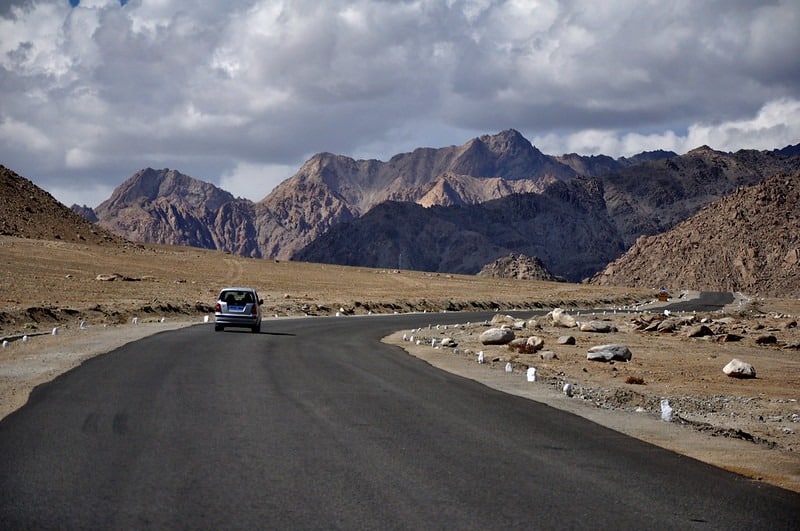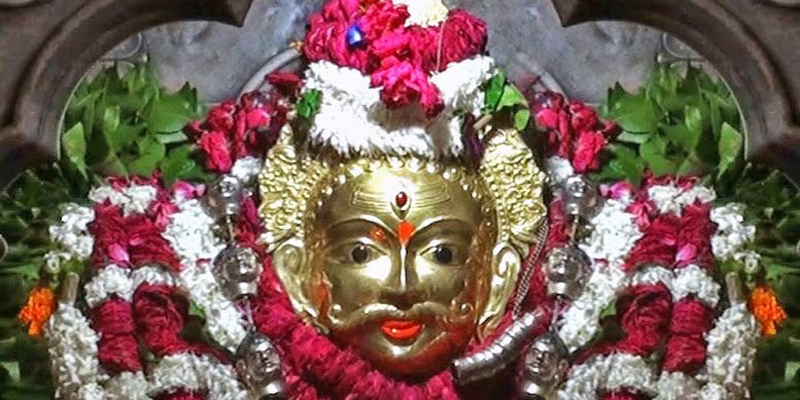The Mahabharata, a Sanskrit epic poem, is considered the longest epic poem and people hail it as the largest single literary work. It consists of 1.8 million words and scholars believe that it took over 600 years to write. However, the significance of the Mahabharata extends beyond being a historical tale. The essence of the Indian subcontinent deeply ingrains this living heritage, and even today, one can feel echoes of this timeless epic throughout the region. Moreover, it is a realm where legends and divinity intertwine, and the ancient battles still resonate through the corridors of time. Within the vast expanse of the Indian subcontinent, numerous ancient sites bear witness to the legacy of the Mahabharata.
While the epic Ramayana left its mark along the path connecting Ayodhya to Rameshwaram, the imprint of the Pandavas spans the entire nation, a testament to their unwavering spirit and pursuit of righteousness.
Legends on wheels – A Mahabharata road trip

As you embark on a journey through the modern-day Indian subcontinent, you will realize that the Mahabharata transcends the confines of history books and becomes more than just a tale. It is a living heritage that resonates deep within the land’s soul. So, book a Savaari and explore the Mahabharata locations in India. In the following blog, we will delve into some of the Indian destinations intertwined with the rich tapestry of the Mahabharata. It offers an immersive voyage into the realms of timeless mythology and profound significance.

1. Kurukshetra, Haryana -The sacred battlefield
Kurukshetra holds immense historical importance as the site where the epic Mahabharata war took place, spanning 18 intense days and leaving all who witnessed it in awe. The name Kurukshetra derives from King Kuru, the ancestor of the Pandavas. This place holds great significance as it was the battleground for the Kurukshetra war. This is also where Lord Krishna preached the Bhagavad Gita to Arjuna.
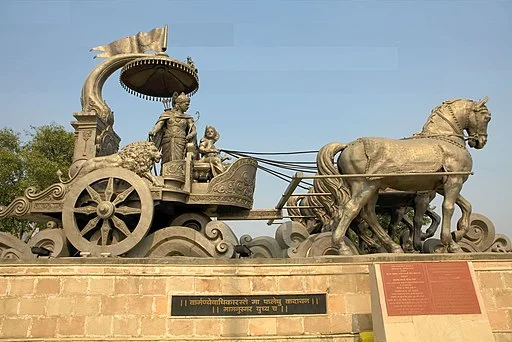
Kurukshetra, today, is a vibrant city in the northern Indian state of Haryana. One of its notable attractions is the Kurukshetra Panorama and Science Centre. It is where a magnificent diorama showcases the grandeur of the legendary battle described in the Mahabharata. Also, another pilgrimage site of great importance is the town of Jyotisar, located west of the city. It is where the sacred scripture, the Bhagavad Gita, was first delivered as narrated in the epic.

How to reach – To reach Kurukshetra, you can fly to Chandigarh airport, which is approximately 83 kilometres away. From there, you can easily book an airport taxi to get to the historical area and explore the important site associated with the Mahabharata.
2. Indraprastha, Delhi – The fabled capital of the Pandavas
Indraprastha, mentioned in ancient Indian literature, served as the capital city of the Kuru Kingdom under the rule of the Pandavas, as described in the Mahabharata. Initially, Indraprastha was a rugged forest and barren land called Khandavaprastha, located along the banks of the Yamuna River. The renowned architect Vishwakarma transformed it into a magnificent city. The epic describes Indraprastha as a utopia, an exemplary model of a well-planned and prosperous city. It boasted grand palaces, wide roads, lush gardens, and water features, creating a remarkable urban landscape.

Indraprastha held immense significance as the proud capital of the Pandavas, and people believe that the renowned Purana Qila stands on the very grounds where the ancient city of Indraprastha once thrived. It is one of the greatest Mahabharata locations in India. The Archaeological Survey of India (ASI) has conducted extensive excavations in the area since the 1950s, unearthing numerous artefacts such as unique pottery, painted items, utensils, and other objects dating back to that period. These discoveries provide valuable insights into the ancient settlement of Indraprastha and its historical significance.
How to reach:
The road distance between Delhi Airport (DEL) and Indraprastha is 23 km, so the most ideal way to travel to the glorious capital city of the Pandavas is by booking an airport taxi.

3. Badrinath, Uttarakhand – Where the Mahabharata found its voice
Believers hold that Badrinath, a revered pilgrimage site, was the dwelling place of the sage Krishna Dvaipayana, also known as Vyasa or Ved Vyasa, who authored the epic Mahabharata. It is said that the sage resided and composed the epic with the assistance of Lord Ganesha. According to another legend, the Pandavas also spent some time in Badrinath during their exile. It is one of the greatest Mahabharata locations in India.

How to reach: Badrinath has excellent road connectivity with major cities and destinations in Uttarakhand. You can take a bus or hire a cab from cities like Haridwar, Dehradun, Rudraprayag, Rishikesh, etc. Many people also hire a cab from Delhi to Badrinath and travel via NH7 to enjoy the scenic beauty along this 13-hour drive.
4. Ekachakra, West Bengal – Demons, divine powers, and sacred unions
Ekachakra in Birbhum District of West Bengal is a significant location in Mahabharata that witnessed several important events unfold. During the Kurukshetra battle, Lord Krishna broke his vow and used a chariot wheel chakram to help Arjuna defeat Bhishma. The discarded chakram fell on a piece of land, and people came to know it as Ekachakra. This place is also where Bhima slayed the demon Bakasura.

During their stay, a Brahmana visited them and informed them about the swayamvara (a marriage ceremony where the bride chooses her husband) of Draupadi, arranged by King Drupada of Panchala. Arjuna succeeded in the competition, and the brothers returned home with Draupadi, unknowingly leading to a misunderstanding where all five brothers married Draupadi.
How to reach – The distance between Kolkata and Ekachakra is 175 km. The best way to travel to Ekachakra from Kolkata is to book a car rental for a hassle-free journey.
5. Lakshagraha Varnavat, Uttar Pradesh – The Pandavas’ great escape
Dhritarashtra, the ruler of the Kuru kingdom, selected his nephew Yudhishthira as his heir, which led to the growing popularity of Yudhishthira and his brothers, the Pandavas. Fueled by envy, Duryodhana ordered the construction of a palace made of highly flammable lacquer, intending to set it ablaze while the Pandavas and their mother, Kunti, slept. Their uncle Vidura cryptically warned Yudhishthira of the plot in a secret language, along with a means of escape.
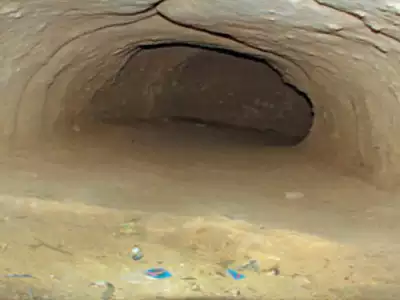
Upon arriving, Yudhishthira informed his family of the danger. He discovered the lacquer palace contained highly combustible materials and devised a survival plan. Vidura arranged for a skilled miner to assist them. The Pandavas escaped thanks to the miner who secretly dug a wide tunnel from the lacquer palace’s centre to the river Ganga’s banks before it was set aflame. Recent archaeological excavations have unearthed various artefacts such as plates, bowls, cooking pots, arrowheads, spearheads, and beads. These findings are associated with the Painted Grey Ware culture, providing tangible evidence of this ancient event, making it one of the greatest Mahabharata locations in India.
How to reach: Lakshagraha Varnavat is located 83 kms from Delhi. The best way to reach Lakshagraha Varnavat is by booking an outstation taxi from Delhi.
6. Hastinapur, Uttar Pradesh – Where legends were forged and fates decided
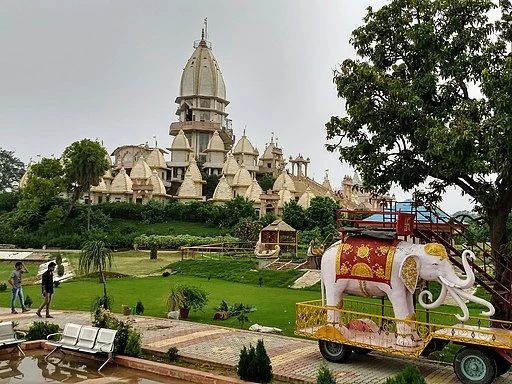
Hastinapur, situated near Meerut in Uttar Pradesh, served as the majestic capital city during the time of the Mahabharata. It was the seat of power for both the Kauravas and the Pandavas. It is one of the greatest Mahabharata locations in India. Many significant events from the Mahabharata took place in Hastinapur. Yudhishthira faced the infamous gambling game here, losing his brothers, Draupadi, and wealth.
Krishna also visited the court of Dhritarashtra as a peace envoy for the Pandavas. Before the birth of the Pandavas and Kauravas, Bhishma took an oath in Hastinapur. He renounced his right to the throne and committing to celibacy. After emerging victorious in the Mahabharata War, the Pandavas established Hastinapur as their capital.
How to reach – Hastinapur is located 1 hour away from Meerut in Uttar Pradesh. The best way to travel to Hastinapur is by booking an hourly car rental in Meerut.
7. Chambal River – A testament to Draupadi’s resilience
The Chambal River, flowing along the southern slopes of the Vindhyas and spanning parts of Madhya Pradesh, Rajasthan, and Uttar Pradesh, carries a mystical aura as a cursed river. Unlike most other rivers, it is not revered or worshipped. It is one of the greatest Mahabharata locations in India.

Its association with the Mahabharata is traced back to the infamous dice game where Draupadi was disrobed, and she purportedly cursed the river, decreeing that its waters would remain untouched. It would not receive the reverence accorded to other rivers that sustain communities. Ironically, in present times, the Chambal River stands as one of the cleanest rivers in India, boasting rich aquatic biodiversity.
8. Kashi, Uttar Pradesh – The legacy of Amba’s curse and Shikhandi’s redemption
During the Mahabharata era in the renowned city of Kashi, now known as Varanasi, Bhisma, a valiant warrior, conquered the three daughters of the King of Kashi: Amba, Ambika, and Ambalika. Bhisma aimed to marry them to Vichitravirya, but Amba, deeply in love with Shalya, Shishupal’s brother, refused. Consequently, Ambika and Ambalika became Vichitravirya’s wives, giving birth to Dhritarashtra and Pandu, who became the ancestors of the Kauravas and Pandavas, respectively.
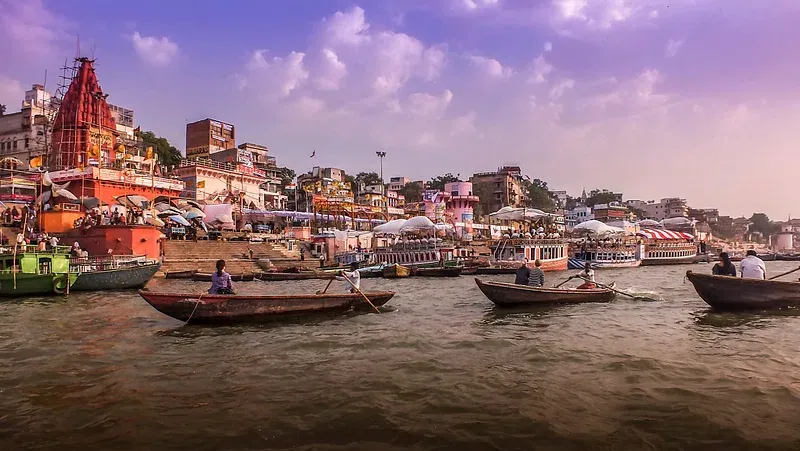
Devastated by her separation from Shalya, Amba sought a divine boon to be reborn and seek vengeance for causing Bhisma’s downfall. In her next life as Shikhandi, she played a pivotal role in Bhishma’s fate, as he had pledged not to harm women. Shikhandi, born biologically female but transformed later to male, was instrumental in the Kurukshetra War. Bhishma’s oath prevented him from fighting Shikhandi, which allowed Arjuna to confront Bhishma by using Shikhandi as a shield. He ultimately defeated him, fulfilling Amba’s desire for revenge. It is one of the greatest Mahabharata locations in India.
How to reach: Varanasi has excellent road connectivity. To get to Varanasi from important nearby cities like Kanpur, Allahabad, Noida, Delhi, etc., you can take a private taxi, or a cab.
9. Vrindavan, Uttar Pradesh – Temples and tales of lord Krishna
Vrindavan, located 10 km from Mathura in Uttar Pradesh, is a picturesque town where Krishna joyfully spent his childhood playing with the enchanting Gopis. It has become an important pilgrimage site adorned with beautiful temples dedicated to Krishna and Radha. Gokul, situated 15 km from Mathura, is a remarkable place that sheltered Krishna from the wicked intentions of his maternal uncle, Kans. Every year, Braj attracts thousands of devotees who embark on a journey to celebrate Holi.
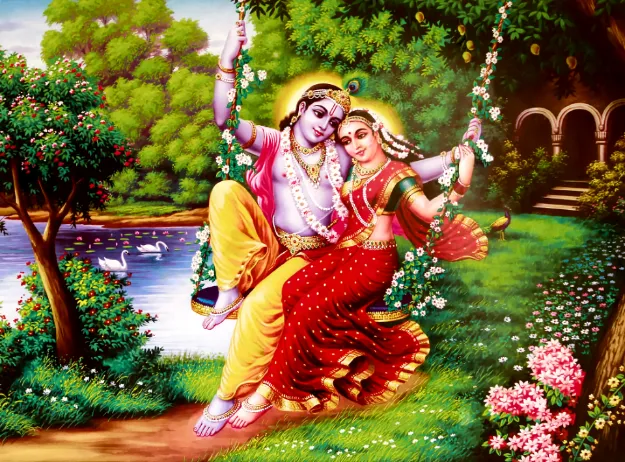
Braj ki Holi refers to the unique and vibrant celebration of the festival of Holi in the Braj region of India, particularly in the towns of Barsana, Mathura, and Vrindavan. This region holds significant importance in Hindu mythology and is closely associated with the life and teachings of Lord Krishna. In Gokul, you can explore the temple and visit the captivating Prem Mandir in Vrindavan.
How to reach:
Vrindavan has excellent connectivity to the rest of Uttar Pradesh and the national capital region through Taj Expressway/Yamuna Expressway, NH 19, and NH 44. There are regular state-run and private buses to Vrindavan from Delhi, Gurgaon, Agra, Mathura, Aligarh, Alwar, Faridabad, Gwalior etc. The best way to travel from either of these places to Vrindavan is to book a cab and do a road trip.
10. Chedi, Madhya Pradesh – Where Krishna’s elopement ignited conflict
Chedi, located in Madhya Pradesh between the Ganga and Narmada rivers, was a magnificent city during the era of the Mahabharata. Shishupal, the King of Chedi, desired to marry Rukmini, but Krishna eloped and wedded her. This act fueled Shishupal’s perpetual anger towards Krishna. In the Mahabharata War, the people of Chedi sided with the Kauravas, supporting their cause.
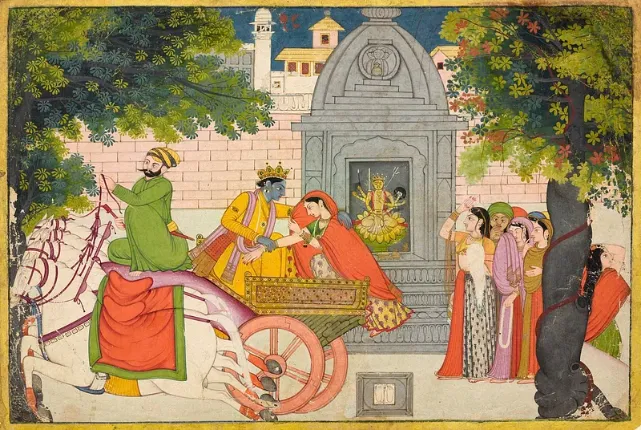
How to reach: To reach Chedi from Jabalpur, the best option is to book a Savaari. The distance between Jabalpur and Chedi is 28 km, and the journey takes approximately 45 minutes.
11. Pragjyotishpur, Assam – The legend of Krishna’s 16,000 brides
Pragjyotishpur, the ancient capital of Assam, was situated near present-day Guwahati. During the time of the Mahabharata, it was ruled by King Narkasur. Narkasur infamously held 16,000 girls captive and even battled with Lord Krishna. Krishna emerged victorious, defeating and slaying Narkasur and rescuing the captive girls he later married and took to Dwarka. Bhagdutt, the ruler of Pragjyotishpur, fought on the side of the Kauravas in the Mahabharata war. He was ultimately killed by Arjuna. Notably, near the Neelkanth Mountain in this region stands the renowned Kamakhya Devi temple. It is believed to have been built by Narkasur himself. It is one of the greatest Mahabharata locations in India.
How to reach: To reach Pragjyotishpur from Guwahati, the best option is to book a Savaari. The distance between Guwahati and Pragjyotishpur is 6.3 km, and the journey takes approximately 21 minutes.
12. Patan, Gujarat – Bhima’s encounter and marriage with Hidimba
Patan in Gujarat held great commercial importance during the time of the Mahabharata. It is believed that during the Dwapar Age, a forest called Hidimb van was near this city. While in exile, the Pandavas arrived in Patan, where Bhima encountered and defeated a demon named Hidimba. He eventually marrying his sister, Hidimbi.
How to reach: To reach Patan from Ahmedabad, booking a Savaari with chauffeured drivers is the best option. The distance between Ahmedabad and Patan is approximately 130.0 km, and the journey takes approximately 2 hours and 49 minutes. Savaari provides convenient and comfortable transportation services, ensuring a hassle-free journey to your destination.
13. Bhishma Kund, Haryana – Where arrows of devotion created a spring
Located in Narkatari, Bhishma Kund is significant in the epic Mahabharata. It is believed to be where the revered Bhishma observed the momentous battle after being placed on a bed of arrows by Arjuna. As a result, a temple now stands beside the water tank known as Banganga or Bhishma Kund.

According to legend, when Bhishma felt thirsty while on his arrow bed, Arjuna swiftly shot an arrow into the ground, causing a stream of water to gush forth. According to belief, this miraculous event is said to have given rise to the Bhishma Kund, and there is also a small temple nearby.
14. Mahabalipuram, Tamil Nadu – Arjuna’s penance and the descent of Ganga
In Mahabalipuram, people honour the Pandavas by naming the earliest stone temples after the five brothers. Among the captivating rock sculptures adorning the temples, the remarkable artwork known as Arjuna’s Penance takes centre stage. This sculpture holds two interpretations: one suggests that it represents Arjuna, one of the Pandavas, performing rigorous austerities to acquire Shiva’s divine weapon. Another viewpoint associates it with King Bhagiratha, who undertook penance to bring the heavenly River Ganges down to purify the souls of his ancestors. It is one of the greatest Mahabharata locations in India. Approximately 96 feet, this monolithic sculpture, also known as ‘The Descent of Ganga,’ symbolizes the divine arrival of the sacred river.

If you’re planning a trip to Mahabalipuram, you’ll find numerous attractions to explore, including stunning beaches and ancient temples. For a detailed and comprehensive travel guide to Mahabalipuram, make sure to check out the link.
How to reach: Mahabalipuram is around 67 km by road via East Coast Rd from Chennai. You can book a Chennai to Mahabalipuram taxi and reach within 1.5-2 hours.
15. Arvalem, Goa – Draupadi’s kitchen and beyond
In the serene village of Arvalem in North Goa, there exists a collection of six small caves carved out of native laterite stone, popularly known as the Pandava Caves. These caves hold a special significance as people attribute them to the Pandava brothers from the ancient Indian epic, the Mahabharata. It is believed that each of the five caves was inhabited by one of the Pandava brothers, and Shivalingas are now enshrined within them. According to belief, during the final year of their exile, the brothers sought shelter in these caves and offered prayers to Lord Shiva. It is one of the greatest Mahabharata locations in India.

The sixth cave, Draupadi’s Kitchen, presents an intriguing feature. It features a kitchen-like platform with carved depressions resembling utensils, possibly used for holding food. Adding to the mystique, these caves are near a natural waterfall, creating a serene pond. Legend has it that Bhim, one of the Pandava brothers, made this pond.
“During my trip to Goa with my parents, our Savaari driver recommended a visit to a fascinating cluster of caves believed to have been inhabited by the Pandavas. I was taken aback by this revelation since I had always believed that the Pandavas never ventured to the southern region during the Mahabharata era. The allure of discovering individual caves associated with different brothers intrigued me greatly, and I’m incredibly grateful that our driver suggested this hidden gem, as I might never have known about it otherwise.”
Sourav Rathode
Goa offers more than just its beautiful beaches. The state is a treasure trove of culture, spirituality, and adventure waiting to be explored. If you’re looking for offbeat experiences in Goa, make sure to check out this visual travel guide that showcases a variety of unique activities and attractions beyond the typical tourist spots.
16. Mana, Uttarakhand – The starting point of the Pandavas’ final journey
Mana, also known as Mana Village, holds significant cultural and mythological importance in the Hindu epic Mahabharata. Located near Badrinath’s sacred town in Uttarakhand, India, Mana is often referred to as the last village of India due to its proximity to the Indo-China border. According to the legends, the Pandava brothers embarked on their final journey, known as vanaprastha or the renunciation of worldly life after the great Kurukshetra War. Mana is believed to be the starting point of this journey for the Pandavas. It is said that Draupadi was the first to depart from here after crossing the Saraswati River.
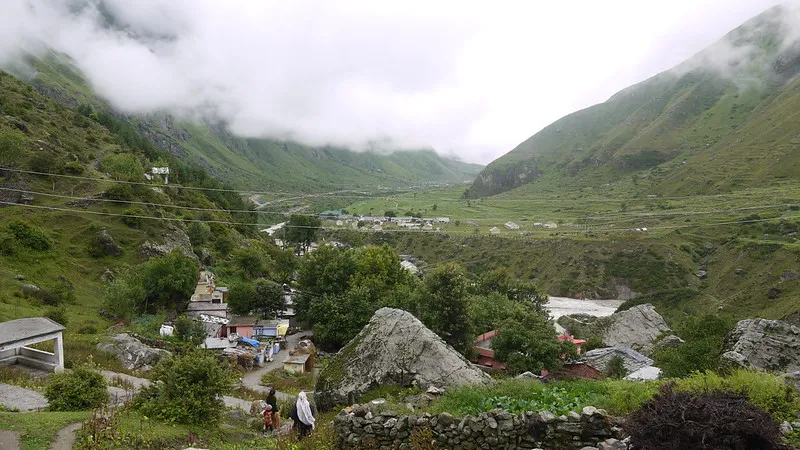
While Draupadi was the first to leave, all the Pandava brothers except Yudhishthira, the eldest of the five, departed from Mana. The Pandavas, namely Yudhishthira, Bhima, Arjuna, Nakula, and Sahadeva, took different paths for their final journey, seeking liberation and salvation. One of the notable attractions in Mana is the Bhim Pul, a narrow passage named after Bhima, one of the Pandava brothers. It is also where Bhima placed a massive rock bridge across the Saraswati River using his extraordinary strength. It is one of the greatest Mahabharata locations in India. Moreover, the Bhim Pul is a testament to his mighty feats and is still present in the village, attracting visitors who witness this remarkable structure.
How to reach: To reach Mana village, the sole option is to take the road, specifically NH-58. The highway starts from Badrinath, and the village is approximately 4 km away. Travellers can accomplish this distance by hiring a shared or private taxi from Badrinath, ensuring a convenient journey to reach the village.
17. Chandratal Lake, Himachal Pradesh- Yudhishthira journey to heaven
Chandratal Lake, also known as Moon Lake, is a captivating destination located in the Spiti Valley of Himachal Pradesh, India. After the Draupadi’s departure, the Pandavas continued their journey to heaven and took different paths for their final trip. As they walked, they all perished except Yudhishthira. Indra, the god, picked him up at Chandratal Lake.

Interestingly, the story also credits Swargrohini in Uttarakhand as where Yudhishthira finally reached heaven’s gates with his loyal dog. Then, Indra asked Yudhishthira to abandon the dog, but he refused, prioritising loyalty over personal happiness. The dog revealed itself as the deity Dharma, praising Yudhishthira’s virtues. Impressed, they all proceeded to heaven, recognizing Yudhishthira’s exceptional qualities. The crescent-shaped moon lake is associated with numerous intriguing legends, folklore, and a mystery straight out of the X-Files that pique the interest of adventurers.

How to reach: When considering how to get there, the easiest option is to hire a car from any local vendor in the nearest large town, Manali. Manali is 140 kilometres away from Chandratal Lake. The adventure will begin early in the morning in Manali. It includes traversing the Rohtang pass as well as stops at Gramphu, Chhatru, and Batal. Another alternative is to take a bus from Kaza to Batal in the morning. Chandratal Lake is 15 kilometres from Batal. One can either hike their way up, taking in the amazing views. You can also book a taxi to go to the lake.
The Mahabharata has left an indelible mark on India’s cultural and mythological landscape. There are numerous places across the country that bear its historical significance. From Kurukshetra to Mahabalipuram, these destinations provide glimpses into the epic tale and offer a profound spiritual connection. It is important to note that these are just a few examples of the many places in India with ties to the Mahabharata, highlighting the rich mythological heritage of the country. India, with its diverse and spiritually woven fabric, offers a plethora of locations waiting to be explored and discovered.
Embarking on a Mahabharata trail is an ideal way to immerse oneself in this ancient epic and experience the cultural and historical marvels of India. To make the journey even more convenient and enjoyable, consider downloading the Savaari car rental app. It provides access to the best deals and discounts for car rentals, ensuring comfortable travel with knowledgeable chauffeurs who can guide you to the most offbeat and hidden gems along the way. As you traverse the Mahabharata trail, you’ll witness firsthand the enduring impact of this epic on India’s heritage and collective consciousness. It’s a journey that connects the past with the present, offering profound insights into the values, beliefs, and spirituality that continue to shape the nation.
Last Updated on December 17, 2024 by Shabari Shankar



